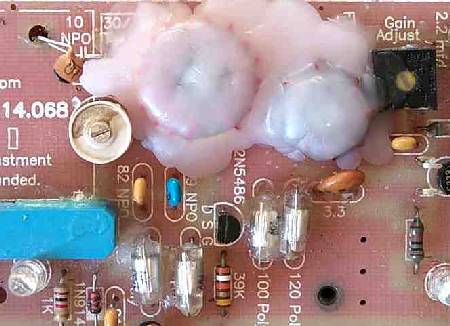


|
Picture shows wax covering the VFO coil and the RF Choke covered with wax. A rubber grommet and 4-40 screw/nut has not been used to hold down the RF Choke. If the hardware is not available, the wax does the job of holding the coils very well without the additional grommets and screws. A regular household candle, bought from a grocery store, is lighted and then the melted wax is poured over the coils. Pour a little at at time, then let it cool on the board, and pour some more. The candle wax can get too hot and be difficult to control. If the wax flows onto the other components, as shown in the picture, leave it as is because it has no effect on the electrical components. If you want to remove some of the wax, wait till it cools and you can break it up easily with a small screwdriver or knife. The wax slows down the transfer of temperature changes from the surrounding air and helps stability considerably. The wax also prevents vibrations from being transferred to the VFO coil and RF Choke. Back to VFO and Amplifiers, Mounting the VFO coil and RF Choke |
